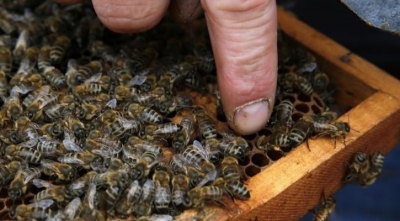
If the food is nearby, the bee performs a round dance by traveling in loops in alternating directions. The round dance doesn’t convey much information about exactly where the food is. However, it’s generally close enough that the worker bees can smell it fairly quickly.
When the food is far away, the scout performs a waggle dance. During the waggle dance, the scout runs in a straight line while waggling her abdomen, and then returns to the starting point by running in a curve to the left or right of the line. The straight line indicates the direction of the food in relation to the sun. If the bee runs straight up the hive wall, then the foragers can find the food by flying toward the sun. If she runs straight down the wall, then the foragers can find the food by flying away from the sun. As the dance progresses, the dancing bee adjusts the angle of the waggle run to match the movement of the sun.
The speed of the returning loops lets the other bees know about the quality of the food source, but the bees learn where to go by following the waggle run. By vibrating her wings and waggling her abdomen, the dancing bee moves a lot of air. The bees around her can feel this air movement. The ones directly behind her, where the air movement is greatest, get a clear idea of where to fly and how far to travel. Once they reach the described position, they begin flying in a search pattern until they find the food source. After that, they make up to a dozen trips back and forth between the hive and the food, remembering the food’s position each time. During each trip, each bee can carry half her weight in pollen or nectar. If necessary, they perform a tremble dance, in which they run in many directions while trembling, to encourage the other bees to begin unloading nectar.
Credit : How Stuff Works
Picture Credit : Google




